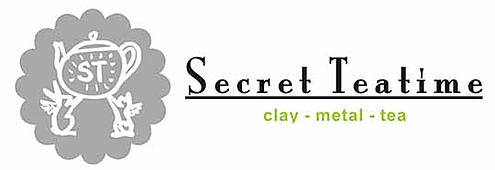
In October I went over to Secret Teatime's studio in Scarborough. I had signed up for their fall Chawan workshop and was eager to try my had my ceramics. We started with an overview of the history of tea ceremony up till present day and covered the shapes of a tea bowl. Helen treated us to seeing her perform
 It was another great Saturday with Secret Teatime. Our group each made a chawan (tea bowl) the first day. Before we met the next Saturday, Helen and Sorlie glazed and fired the works. They were then presented to us during tea ceremony.
It was another great Saturday with Secret Teatime. Our group each made a chawan (tea bowl) the first day. Before we met the next Saturday, Helen and Sorlie glazed and fired the works. They were then presented to us during tea ceremony. For the first section we had usucha (thin tea). It was very interesting to see the difference between Urasenke and Omotesenke, the latter being what Helen was using. The biggest for me is the "snapping" of the fukusa before folding. The whole style was beautiful and had little intentional sounds that were absent from Urasenke.
 Back to our bowls, I was very pleased with how my chawan turned out with the glaze I choose. I depicted a buddhist flame on the shoumen (front of the bowl) and a fox inside it. I choose these two symbols as I find them together in images from shrines in Japan. Also, Inari's symbol is a fox. To me these fit together and worked very well as a piece.
Back to our bowls, I was very pleased with how my chawan turned out with the glaze I choose. I depicted a buddhist flame on the shoumen (front of the bowl) and a fox inside it. I choose these two symbols as I find them together in images from shrines in Japan. Also, Inari's symbol is a fox. To me these fit together and worked very well as a piece.As Sado is a life long learning process and I have been enjoying practice with the new piece. I enjoyed my time at the studio and the company of Helen, and Sorlie.
If you were to make a chawan what would it look like? Would you use any imagery? There are so many possibilities out there, What would you do? -KAT
________________________________________________________________
Follow me for more @bellmanart /katherine.bellmanart
Don't forget to follow this blog. Join the Tea Team!










































